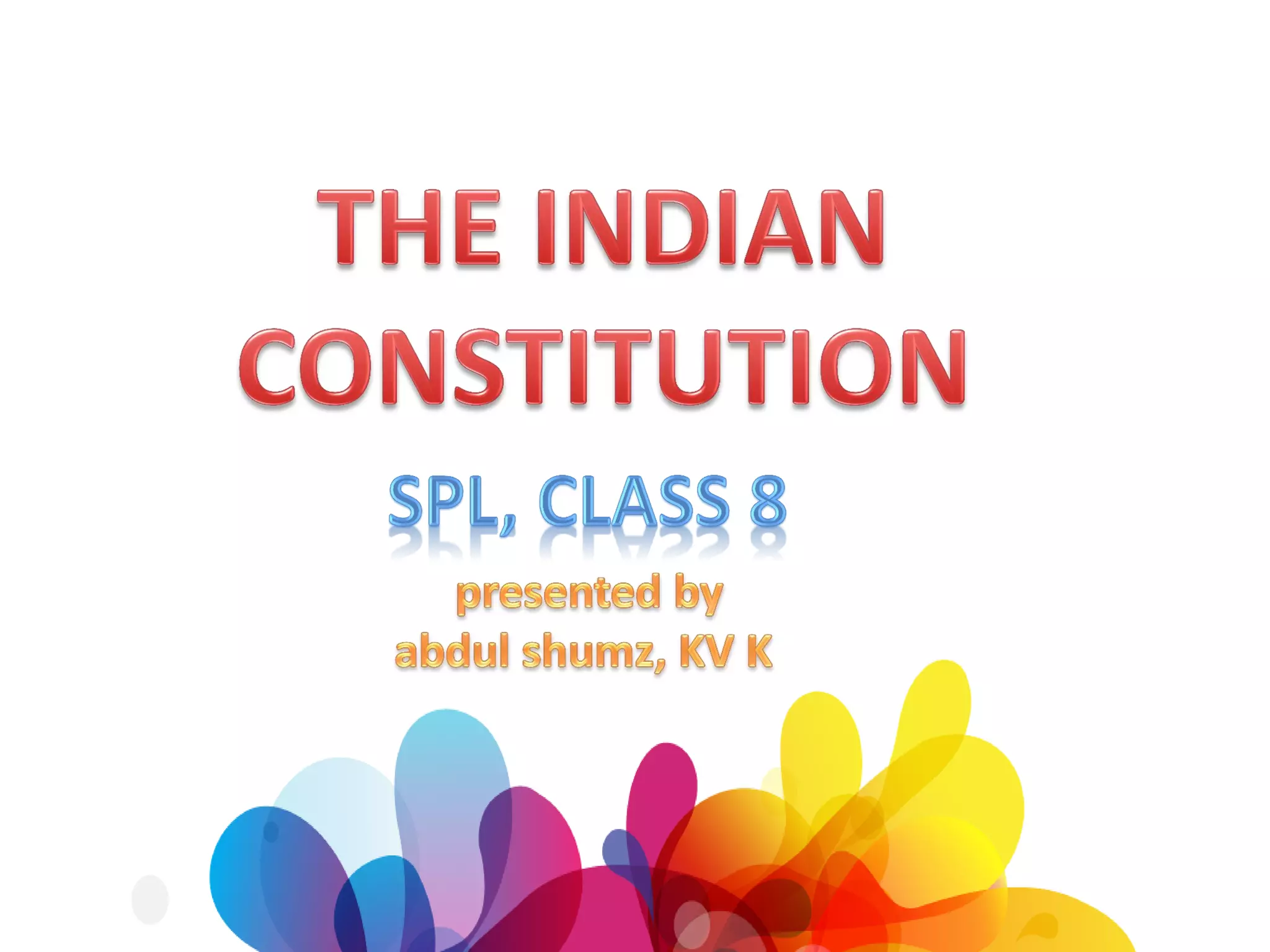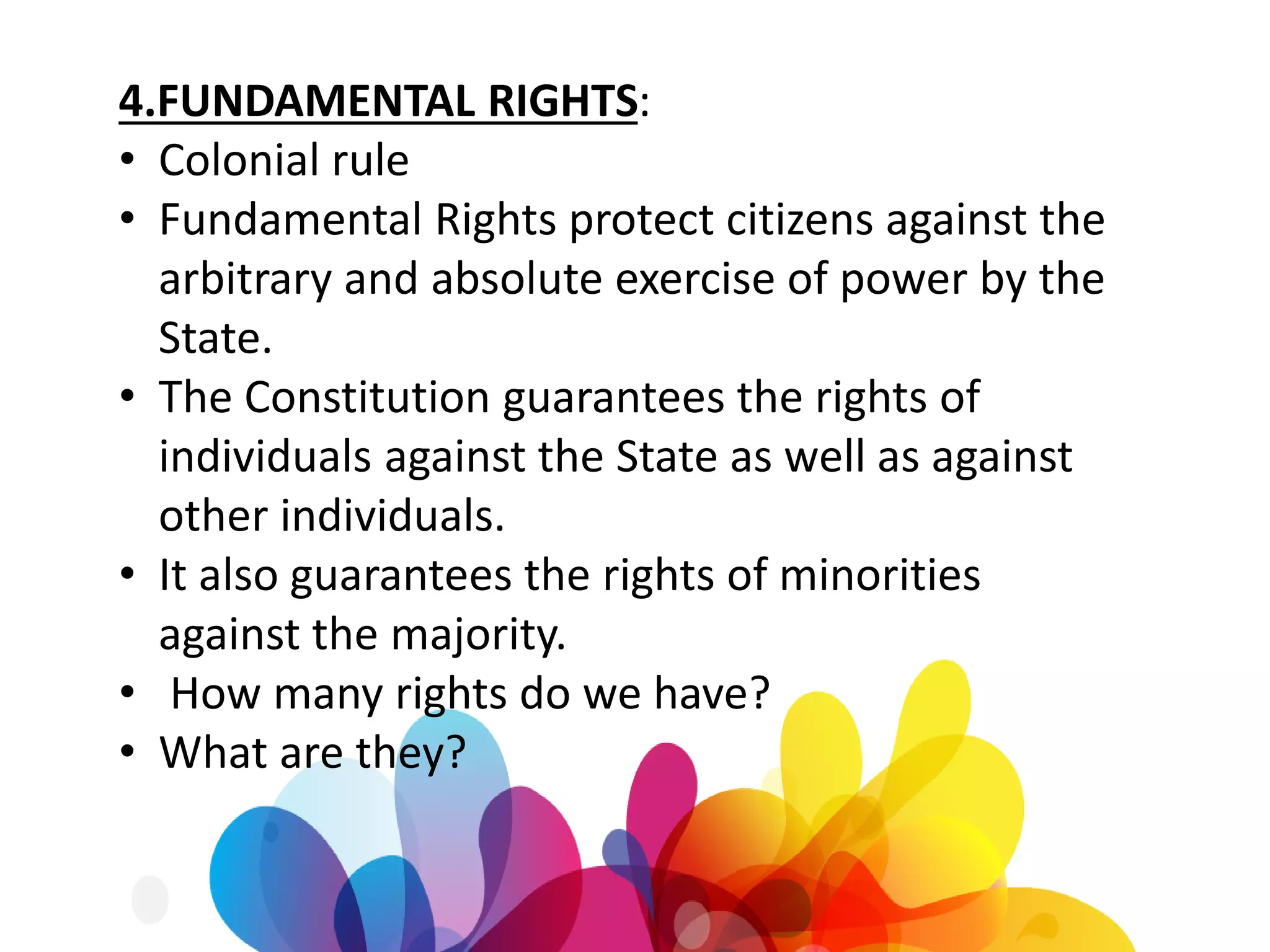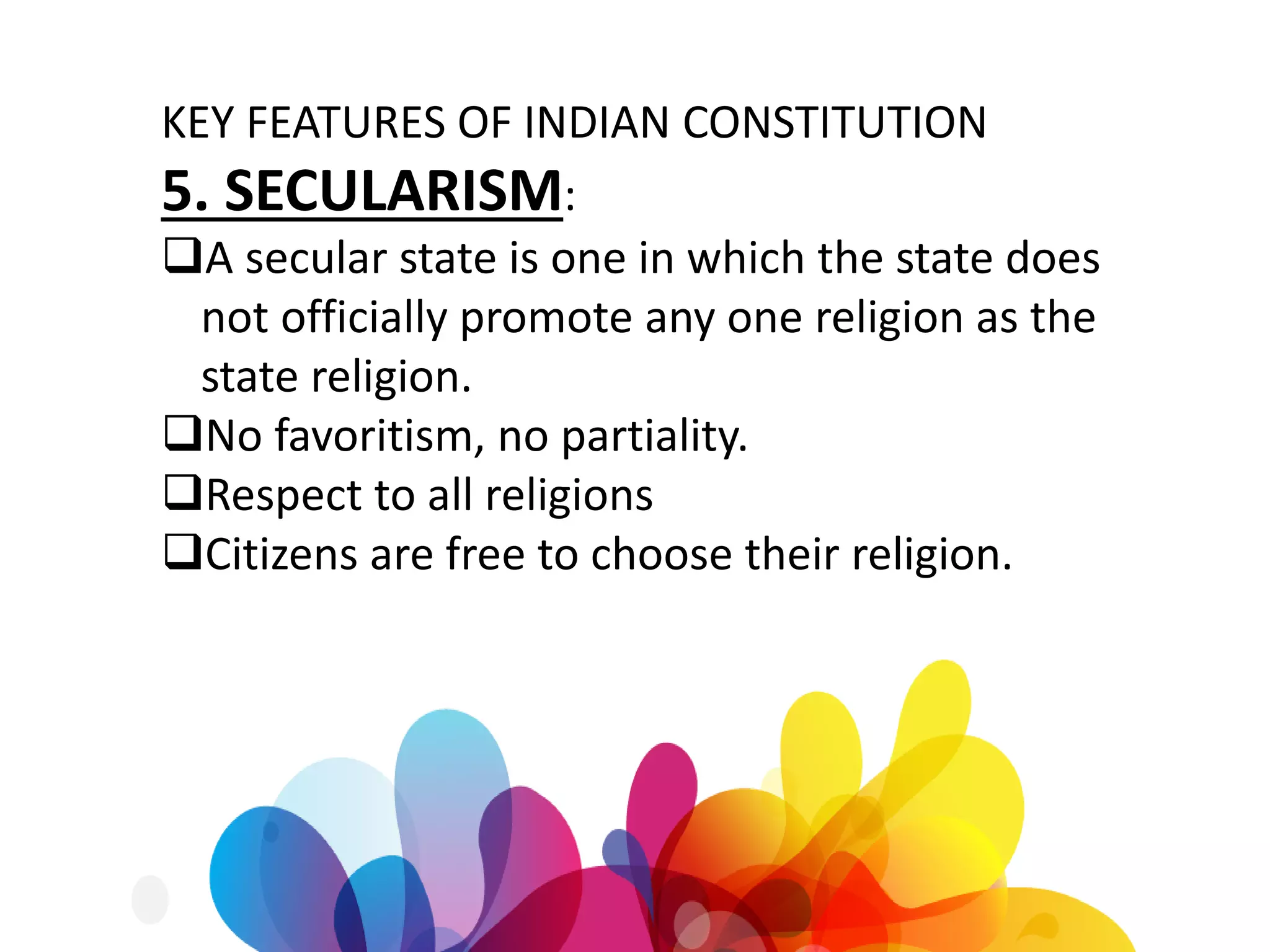The document discusses why countries need a constitution. It provides three key reasons: 1) A constitution lays out the ideals and fundamental nature of the society; 2) It establishes a framework for government including federalism, parliamentary democracy, and separation of powers; 3) It protects citizens' fundamental rights against state overreach and discrimination. The Indian constitution was drafted over three years and is the lengthiest in the world. It establishes key principles like federalism, parliamentary democracy, separation of powers, fundamental rights, secularism, and fundamental duties.
















